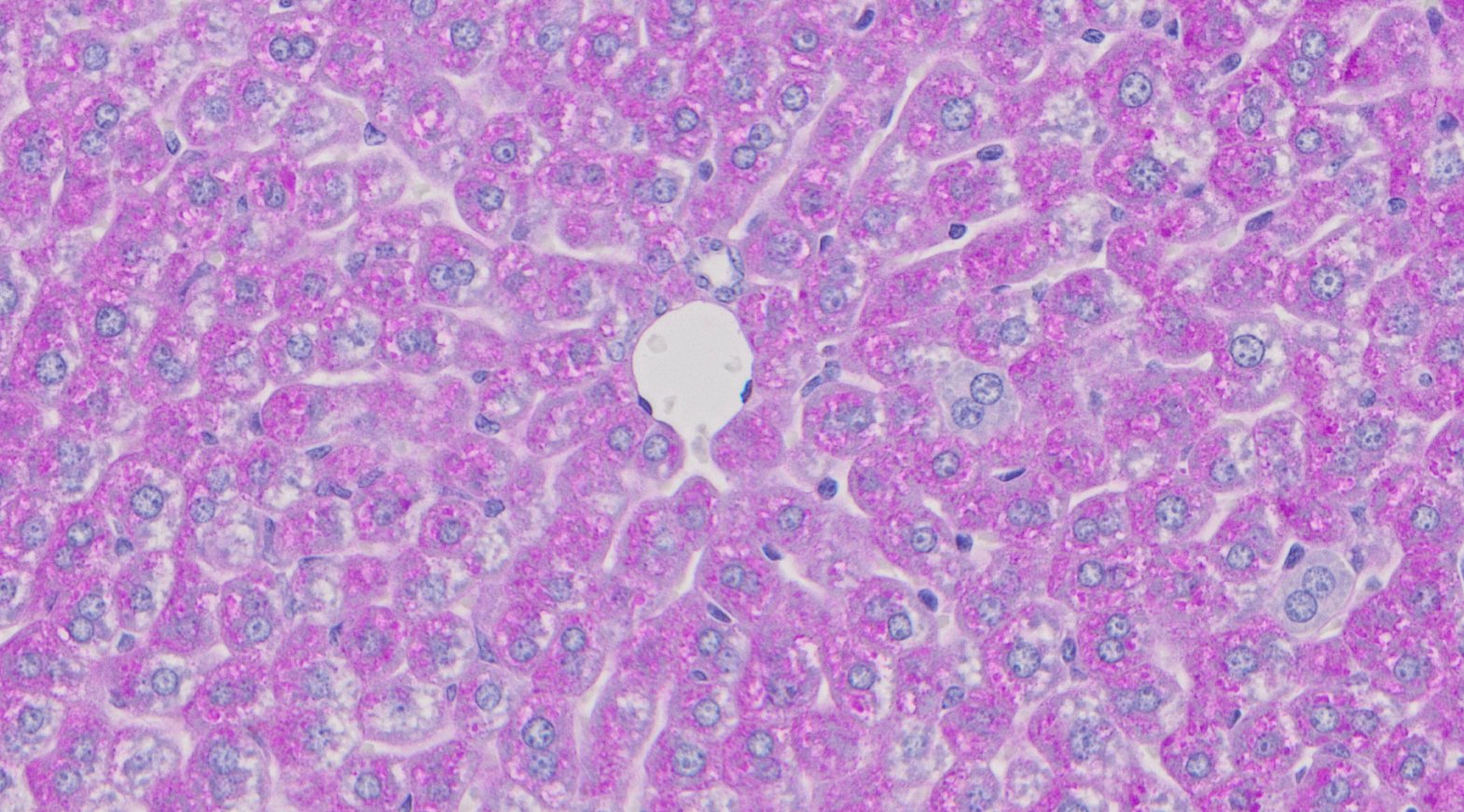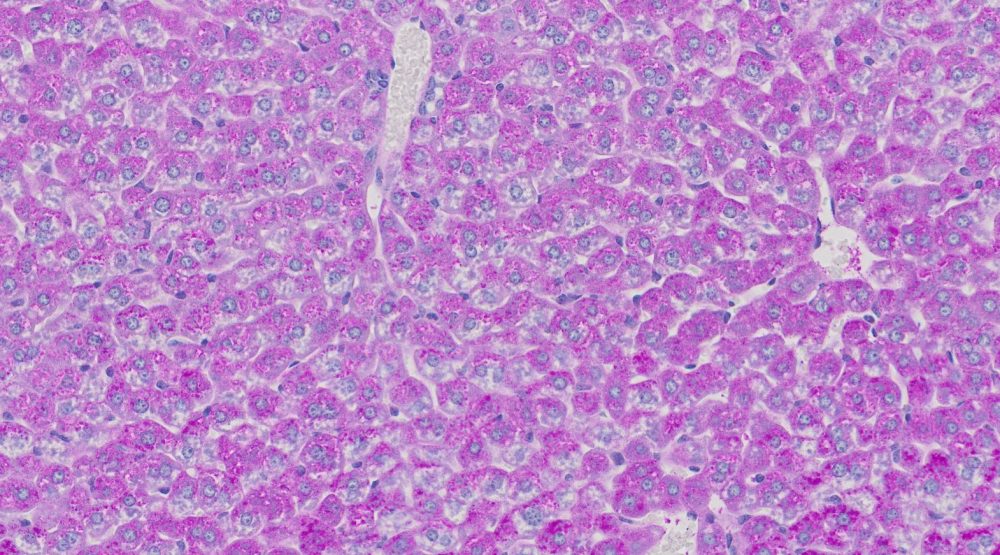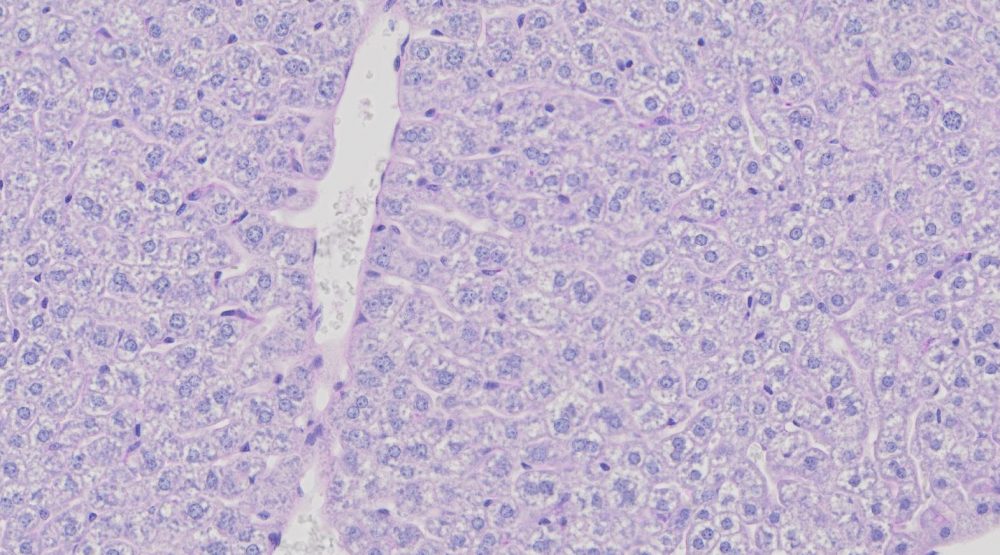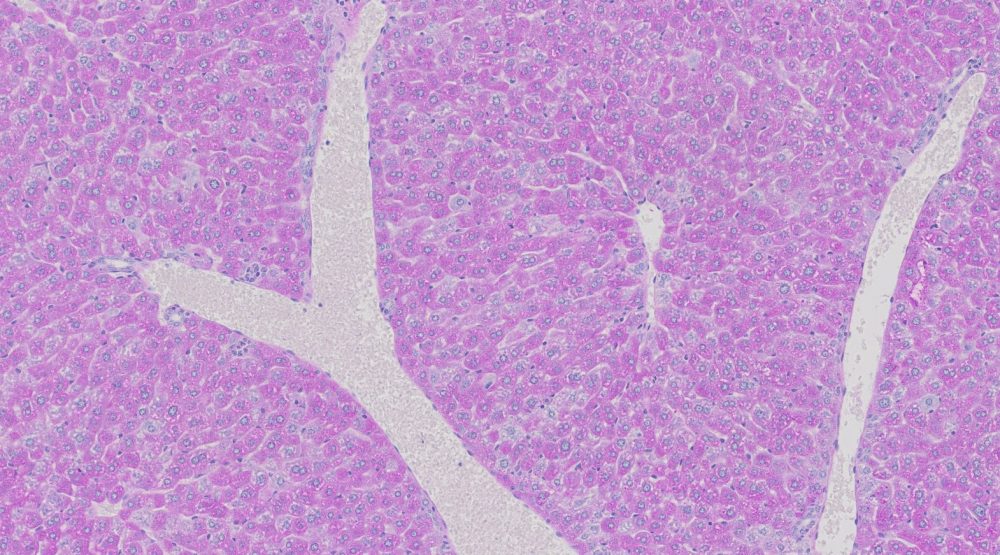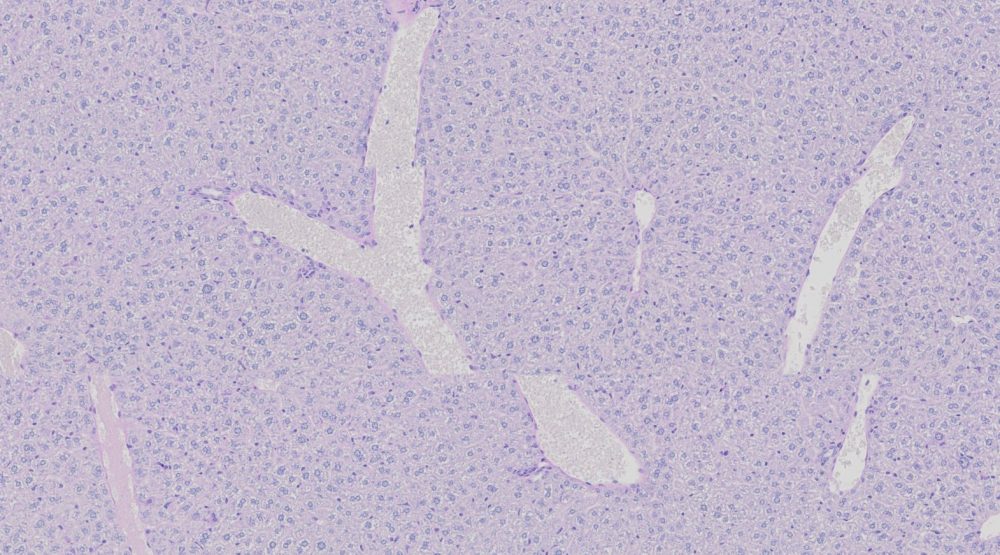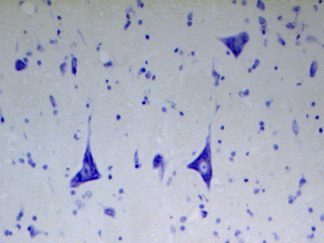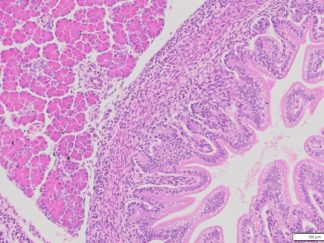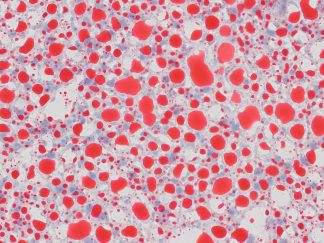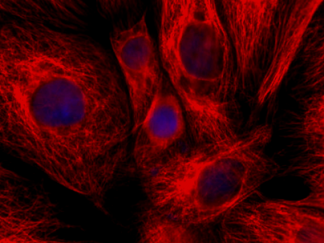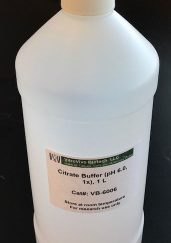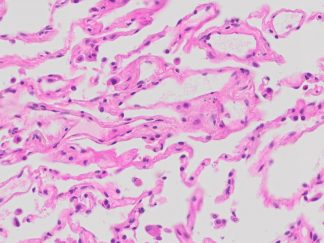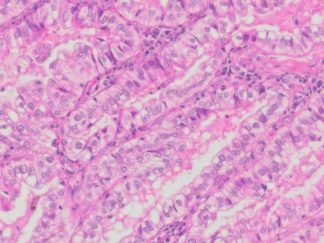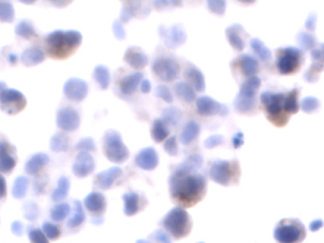Description
The Periodic Acid Schiff or PAS Stain Kit is used for detection of glycogen in tissues such as liver, cardiac and skeletal muscle in formalin-fixed, paraffin-embedded tissue sections. The PAS stain kit may also be used for frozen sections. The PAS reaction in tissue sections is useful for the demonstration of mucopolysaccharides. PAS staining may also be used for the demonstration of fungal organisms in tissue sections. Glycogen, mucin, and fungi will stain purple and nuclei will stain blue.
Kit Contents
- VB-3004-1 Periodic Acid Solution——————–250 ml
- VB-3004-2 Schiff reagent——————————–250 ml
- VB-3004-3 Mayer’s Hematoxylin Solution——- 250ml
Storage Condition:
Schiff reagent: store at 2-8ºC. The others: store at room temperature.
Protocol
- Deparaffinize in Xylene I for 6 minutes and II for 6 minutes.
- Rehydrate: ethanol 100% (2 minutes)x2; ethanol 95% (2 minutes)x2; ethanol 70% (2 minutes)x1; Rinse in distilled water (5 minutes).
- Oxidize in 0.5% periodic acid solution for 5 minutes.
- Rinse in distilled water.
- Place in Schiff reagent for 15 minutes (Sections become light pink color during this step).
- Wash in lukewarm tap water for 5 minutes (Immediately sections turn dark pink color).
- Counterstain in Mayer’s hematoxylin for 1 minute.
- Wash in tap water for 5 minutes.
- Dehydrate and clear with 3 changes of xylene (5 minute per change)
- Mount coverslip onto a glass slide with Permount or some other suitable organic mounting medium.
Results
- Glycogen, mucin and some basement membranes——— red/purple
- Fungi ————————————————————-red/purple
- Background ——————————————————blue
More PAS Staining Images
|
|
|
|
|
|
Precautions: Handle with care. Avoid contact with eyes, skin and clothing. Do not ingest. Wear gloves.

